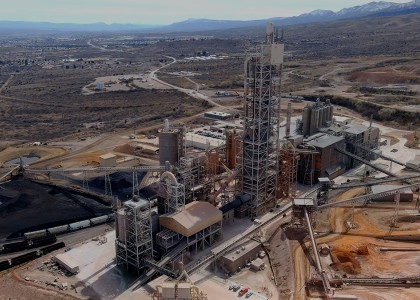ACEEE’s first entry in our energy-water blog series outlined the ways climate change could fundamentally affect the energy-water nexus. In this post, we explore the roles of energy efficiency and water efficiency in moderating some of the adverse impacts of climate change that we covered in the prior post.
Several of ACEEE’s past reports document the inherent linkages between energy and water, and their implications for reducing waste (see here, here, and here). You’ve heard it before, but it’s important to restate: efforts to save water save energy, and efforts to save energy save water. Recognizing this linkage is especially important as climate change begins to alter the dynamics of the energy-water relationship.
Ways to waste less energy in water services and in homes
Before addressing the climate change connection, we’ll touch on what increased efficiency looks like in the water and wastewater sectors, as well as in homes and businesses. There are lots of opportunities to reduce the amount of wasted energy that is related to water. Take drinking water plants for example. Generally speaking, 80% of energy use at drinking water plants is for running motors that pump water. Capital upgrades at water treatment plans, such as installing more energy-efficient pumps or those with variable speed drives, can be part of the solution to increase energy efficiency at these energy-intensive public facilities.
At wastewater treatment plants, even more energy savings are possible by using byproducts of the treatment process to efficiently generate energy for use onsite. Rather than flaring biogas from sludge digesters, some facilities use the gas to operate combined heat and power units to generate heat and electricity.
At the water customer site, energy can be saved through greater use of “greywater” in appropriate applications—we need full water treatment for drinking water, but less pure water can often be used for non-drinking applications (see case studies here).
In addition, there are myriad opportunities for increasing efficiency when heating water for our homes and buildings. Check out presentations from our 2016 Hot Water Forum for examples.
Climate change creates stress on water systems, but energy efficiency can help
As we discussed in our previous blog post, energy use for extraction and treatment of drinking water is expected to increase. For example, saltwater intrusion into some water supplies may mean turning to more energy-intensive water treatment processes. The opportunities to reduce energy in water processes should be seen as part of the solution. Improving energy efficiency can not only soften the blow of increasing energy requirements, but it can also soften the blow on municipal budgets (electricity use for water and wastewater utilities is already a significant operating expense for municipalities). Those treatment plants in flood plains will need significant capital investments to protect them from sea level rise and flooding, so it is a good time to incorporate efficiency as part of these capital investments.
On the electric power generation side of the equation, as cooling water becomes warmer during hot spells or becomes more scarce, the capacity of thermoelectric power generating plants may also decrease. While there are steps that can be taken, such as dry cooling, these come at a significant cost and efficiency penalty. Energy efficiency is not a silver bullet for the changing availability of cooling water; however, increased efficiency can offset some of the decreased capacity and make the energy supply go further, easing resource constraints when it is important to do so.
Using water efficiency to reduce climate stresses
There are many tools in the water conservation toolbox that can alleviate climate stresses, too. Reducing water lost in the distribution system through leak detection programs (see examples here and here) and using water-saving products—like WaterSense-labeled appliances—are two examples. (Both leak detection and water efficiency retrofits are part of the reason water demand from communities served by the Massachusetts Water Resources Authority has fallen by nearly a third since 1980.) These technologies and practices will be important for moderating water demand, when climate change may push demand upwards or alter supply. Tamping down on water waste throughout the system will cushion the impact of likely increased demand for water end-uses like agricultural irrigation and refrigeration equipment. Attention should also be paid to considering water availability when making crop choices—it makes little sense to grow water-intensive crops in the desert.
Green infrastructure (like rain gardens and bioswales) also share some of the climate change benefits discussed above. When a storm hits a community with a combined sewer system, green infrastructure reduces the flow of wastewater into treatment plants, potentially lessening energy demand. Some green infrastructure (like green roofs) can also reduce the urban heat island effect, lessening cooling loads. Green infrastructure’s benefits also are important to keep in mind as climate change necessitates new infrastructure investments.
Accelerating efficiency efforts
The topics discussed here only scratch the surface of efficiency’s adaptation properties, while not touching on its mitigation properties (as others have here, here, and here). Accelerating efforts to save both water and energy will be key in making communities more resilient as the impacts of climate change continue to manifest themselves. We will write about more ways to specifically accelerate efforts, like increasing efficiency programs administered by water and energy utilities, in future posts.
What is the current state of efficiency at the water-energy nexus? The 2015 City Energy Efficiency Scorecard gives us a snapshot for the water utilities and wastewater utilities serving 51 large US cities through its metrics on water efficiency, energy efficiency in water and wastewater facilities, and energy-efficient stormwater management policies. What does it tell us? With only 9 cities receiving perfect scores, there’s room for improvement, and lots of untapped potential.




